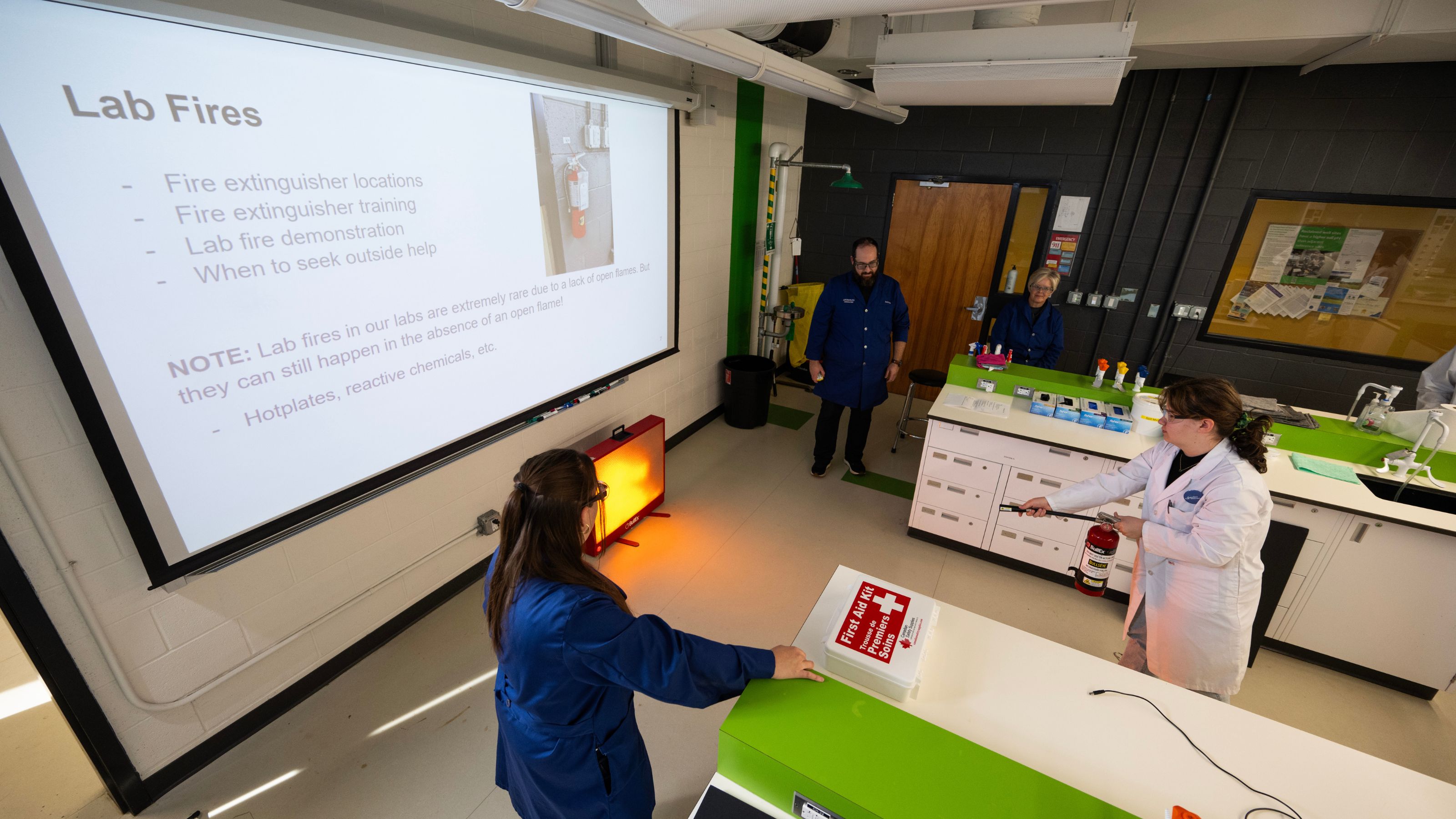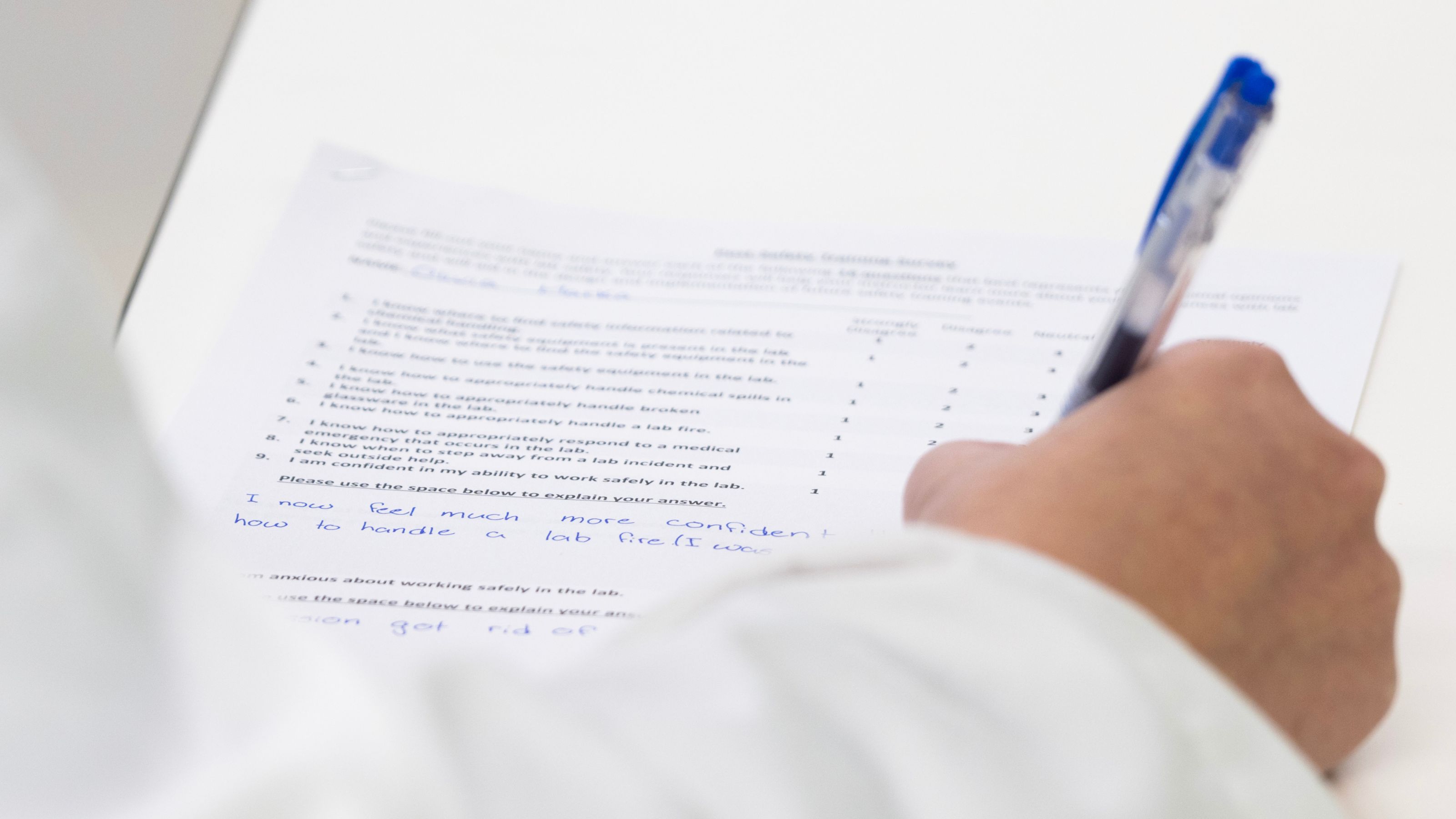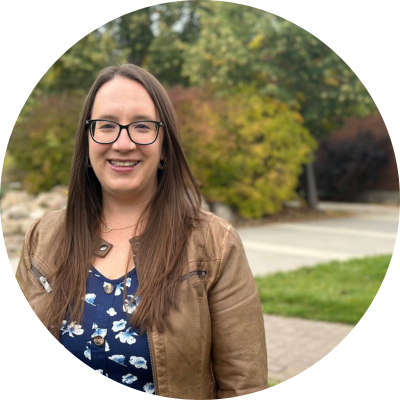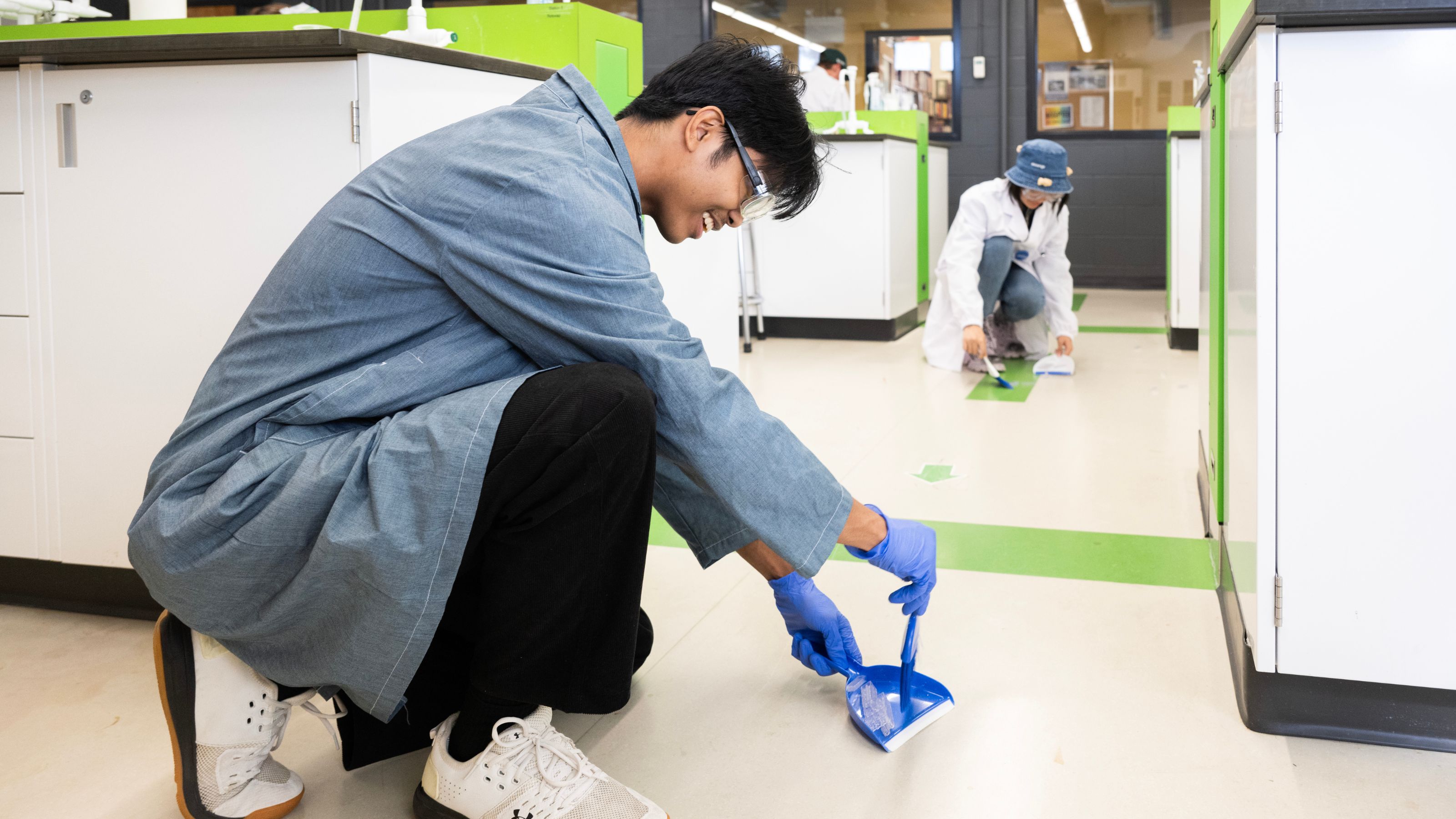Chemistry and labs go hand in hand, like peanut butter and jelly or gin and tonic. The lab is where we chemists get to practice and develop the hands-on technical skills required to conduct experiments and collect data, with the ultimate goal being to enhance our understanding of chemical phenomena. While the lab is a very exciting place to work, it can also be very intimidating and overwhelming, especially for undergraduate students who are at the beginning stages of their chemistry journeys. In particular, the potential for incidents to occur in the lab like chemical spills, broken glassware, lab fires and medical emergencies often has a negative impact on a student’s ability to work safely and confidently in a lab environment.
Like many chemistry programs nationwide, at Augustana Campus we have historically relied on a theoretical approach to lab safety training for our undergraduate chemistry students. What this has meant is that our students have been trained on how to respond to lab incidents and how to use the various safety equipment present in the lab space by completing online training modules and watching videos developed by the University of Alberta. While this training has largely been successful in preventing any major lab incidents from occurring in our chemistry labs, it begs the question: Is theoretical lab safety training on its own enough to properly equip students with the skills that they need to safely and confidently respond to incidents when they do inevitably occur in the lab space? As an example, if a student has theoretical knowledge on how to use a fire extinguisher but has never actually handled a fire extinguisher in real life, will they be able to safely and confidently respond to a fire should one occur in a lab environment?
Reflecting on our own careers and experiences as a chemistry instructor (Liz) and chemistry lab technician (David), we came to the realization that hands-on experience responding to lab incidents has been invaluable to us and critical to our ability to work safely and confidently in the lab. Therefore, in an effort to provide our students with more comprehensive, practical chemistry lab safety training, we developed an innovative, three hour, hands-on safety training experience for senior undergraduate chemistry students at Augustana Campus.
In this training session, which ran in September, students engaged with, and were given the opportunity to actually create for themselves, common incidents that occur in the lab. We then provided the students with hands-on training on how to properly respond to the incident, including giving students the opportunity to handle and use all of the safety equipment present in the lab space. For example, students were given the opportunity to use a training fire extinguisher to put out a simulated lab fire. We also created a controlled lab fire to demonstrate how to properly smother and extinguish small lab fires.

Student Amber Hutton practicing the proper method of putting out a lab fire with a fire extinguisher.
We encouraged our students to spill controlled amounts of solid and liquid materials like water, solvents and weak acids and practice cleaning up and disposing of those chemical spills using the various safety equipment present in the lab. Each student was given the opportunity to smash and clean-up a beaker made from plastic building materials and operate an emergency eye wash station. We also had students activate the lab safety shower, which is something that not even we, as experienced chemists, have had the opportunity to do prior to the safety training session.

Students were surveyed to measure how the safety training session improved their lab safety knowledge, reduced their anxiety and increased their confidence in the lab.
While the full impact of the hands-on safety training session on our undergraduate chemistry students is unknown at this time, what we can say for certain is that never have we observed undergraduate students so highly engaged in chemistry lab safety in our entire careers. This alone suggests that hands-on chemistry lab safety training, in conjunction with theoretical lab safety training, may be a better way to ensure undergraduate students receive the lab safety training they need to work safely and confidently in a lab environment.

About LIZ
Liz McGinitie is an associate professor of chemistry in the Department of Science at Augustana Campus. Her research focuses on the design of novel catalytic systems for use in continuous-flow chemical transformations and the Scholarship of Teaching and Learning in Chemistry, with a focus on collaborative learning, knowledge assessment and transferable skill development, which is highlighted in her most recent publication: Design and Implementation of a Mentorship Course That Utilizes Senior Undergraduate Chemistry Students As Learning Assistants in the Introductory Chemistry Laboratory to Foster Transferable Skill Development. Liz teaches a variety of undergraduate courses including introductory chemistry, inorganic chemistry, environmental chemistry and chemical synthesis, as well as a number of chemistry lab-based courses focused on providing students with practical and highly technical lab skills.

